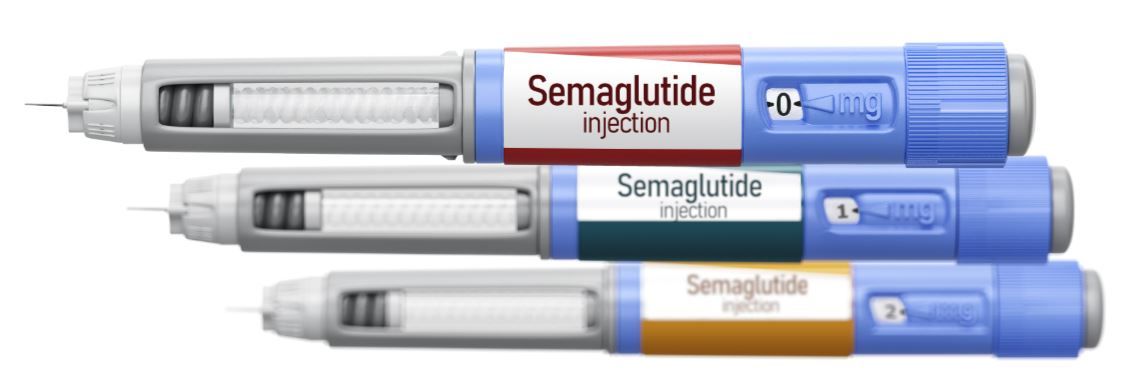- Clinical Technology
- Adult Immunization
- Hepatology
- Pediatric Immunization
- Screening
- Psychiatry
- Allergy
- Women's Health
- Cardiology
- Pediatrics
- Dermatology
- Endocrinology
- Pain Management
- Gastroenterology
- Infectious Disease
- Obesity Medicine
- Rheumatology
- Nephrology
- Neurology
- Pulmonology
Medicare Part D Phase 2 Price Negotiations Target Semaglutide (Wegovy) Plus 14 More Medications
Price negotiations, effective in 2027, cover drugs for diabetes, cancer, COPD, and more, aiming for substantial Medicare savings.
Ozempic (semaglutide), the type 2 diabetes (T2D) drug that has become popular for weight loss, and Wegovy, the form of the drug approved for individuals with obesity or overweight, are on the list for Medicare drug price negotiations in 2025.
Rybelsus, the oral form of semaglutide, also is on the list announced January 17 by the US Department of Health and Human Services (HHS) and its Centers for Medicare & Medicaid Services (CMS) for Medicare Part D price negotiations.
©Corona Borealis/stock.adobe.com

“Last year we proved that negotiating for lower drug prices works. Now we plan to build on that record by negotiating for lower prices for 15 additional important drugs for seniors,” HHS Secretary Xavier Becerra said in the announcement.
The drugs, while effective and in demand, are also expensive, and have been the subject of much public debate on whether and how pharmaceutical giant Novo Nordisk might bring down the price in the United States. Other countries pay less per dose for the drugs.
The authority to negotiate prices comes through the Inflation Reduction Act of August 2022. The drug companies will have until February 28 to decide if they want to participate in price talks that will begin in summer this year. The negotiated drug prices will go into effect in 2027.
“The Biden-Harris Administration continues to make history by announcing the latest round of drugs selected for the Medicare Drug Price Negotiation Program, with the goal of improving access to some of the costliest drugs while saving the American people billions of dollars,” CMS Administrator Chiquita Brooks-LaSure said in the announcement. “Improving prescription drug affordability for Medicare enrollees is the core of the Inflation Reduction Act, and the next cycle of negotiations will continue to strengthen Medicare for generations to come.”
The other drugs selected for the next round of negotiations are:
- Semaglutide (Ozempic, Wegovy, Rybelsus)
- Fluticasone/umeclidinium/vilanterol (Trelegy Ellipta)
- Enzalutamide (Xtandi)
- Pomalidomide (Pomalyst)
- Palbociclib (Ibrance)
- Nintedanib (Ofev)
- Linaclotide (Linzess)
- Acalabrutinib (Calquence)
- Deutetrabenazine (Austedo, Austedo XR)
- Fluticasone/Furoate/Vilanterol (Breo Ellipta)
- Linagliptin (Tradjenta)
- Rifaximin (Xifaxan)
- Cariprazine (Vraylar)
- Sitagliptin and Metformin HCI (Janumet, Janumet XR)
- Apremilast (Otezla)
Using the GLP-1 RAs
From November 2023 to October last year, an estimated 5.3 million Medicare Part D beneficiaries used the 15 drugs to treat conditions ranging from cancer to asthma, according to CMS. The medications carried a total price tag of $41 billion, or approximately 14% of the Medicare Part D’s total gross covered prescription drug costs.
The glucagon-like peptide-1 receptor agonists (GLP-1 RAs) used to treat T2D and obesity topped the list for spending, according to the CMS figures. More than 2.28 million beneficiaries used Ozempic, Rybelsus and Wegovy, with total spending more than $14.42 billion.
That was almost triple the spending on the next costliest drug: Trelegy Ellipta (fluticasone furoate, umeclidinium, and vilanterol inhalation powder), used to treat asthma and chronic obstructive pulmonary disease. Medicare Part D paid more than $5.13 billion for it for the same time period, according to CMS figures.
Cost was a factor in the CMS leaders picking the drugs for negotiations, along with time. Qualifying single-source drugs were selected based on time between FDA approval or licensure and the drug publication date. That spanned at least 7 years for drugs and 11 years for biologics, according to CMS.
‘Obesity is a disease’
The CMS announcement follows the November 2024 announcement that leadership were reinterpreting rules that barred Medicare Advantage and Medicare Part D from covering antiobesity medications.
“In recognition of the prevailing medical consensus that obesity is a disease, CMS is proposing to reinterpret the statute to no longer exclude anti-obesity medications for the treatment of obesity from coverage under Medicare Part D and to require Medicaid programs to cover these medications when used to treat obesity,” CMS announced at the time. “This proposal would provide more Americans access to these transformative medications, improving the health and quality of life for millions of people who have obesity.”
Savings add up
Medicare Part D already has announced the first 10 drugs selected for the first cycle of price talks. When combined with the next 15, the pharmaceutical prices account for more than one-third of Medicare Part D’s total gross covered prescription drug costs, according to CMS.
The negotiated prices for the first round of drugs will take effect in 2026, with prices ranging from 38% to 79% lower than list prices. CMS estimated if those prices had been on the books in 2023, Medicare would have saved an estimated $6 billion in net covered prescription drug costs, or approximately 22%. By 2026, CMS estimated Medicare Part D beneficiaries will save an aggregated $1.5 billion in personal out-of-pocket costs.
Out-of-pocket savings
CMS also has calculated the projected savings to beneficiaries based on the new out-of-pocket cap on drug costs. An estimated 11 million people are expected to hit the $2,000 cap in 2025; CMS estimated they will save an aggregated $7.2 billion, or about $600 per beneficiary receiving financial assistance, or an average of $1,000 for those not receiving assistance to cover drug prices.
References
HHS announces 15 additional drugs selected for Medicare price negotiations in continued effort to lower prescription drug costs for seniors. News release. US Department of Health and Human Services. January 17, 2025. Accessed January 17, 2025. https://www.hhs.gov/about/news/2025/01/17/hhs-announces-15-additional-drugs-selected-medicare-drug-price-negotiations-continued-effort-lower-prescription-drug-costs-seniors.html
